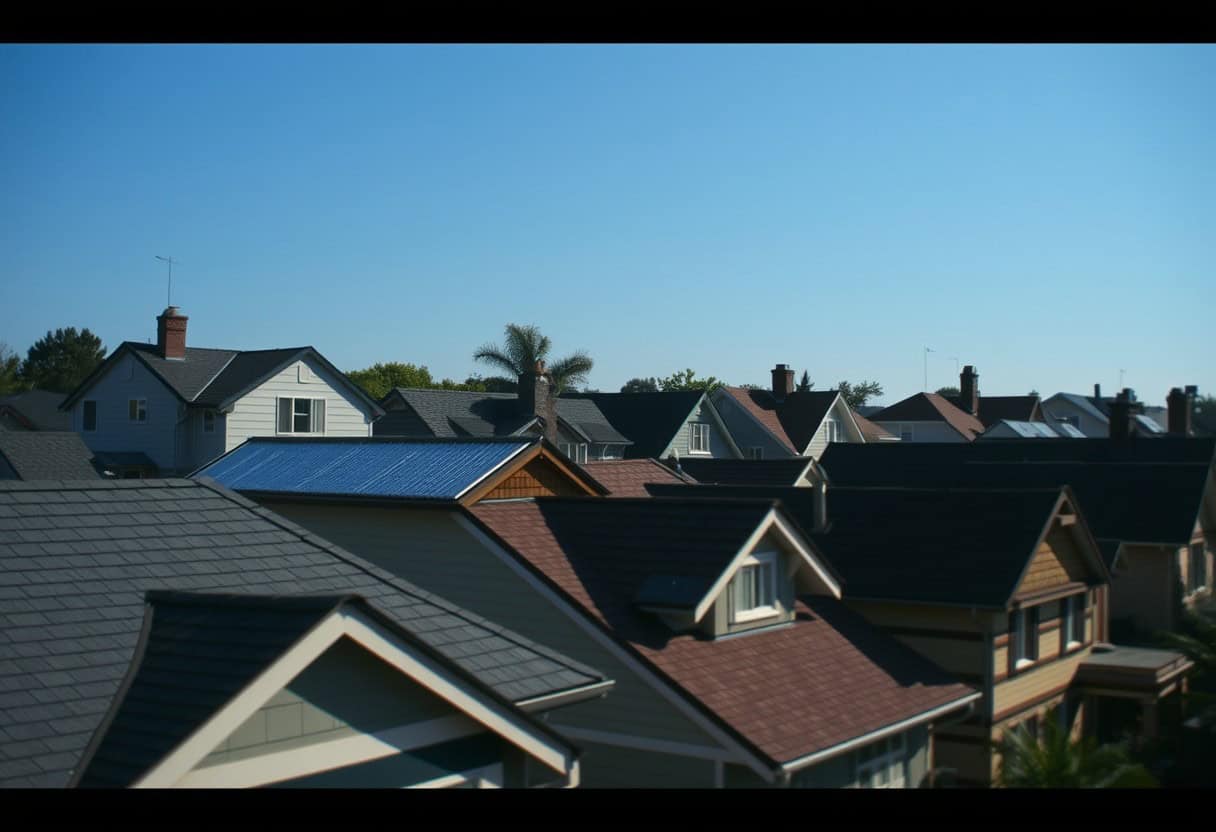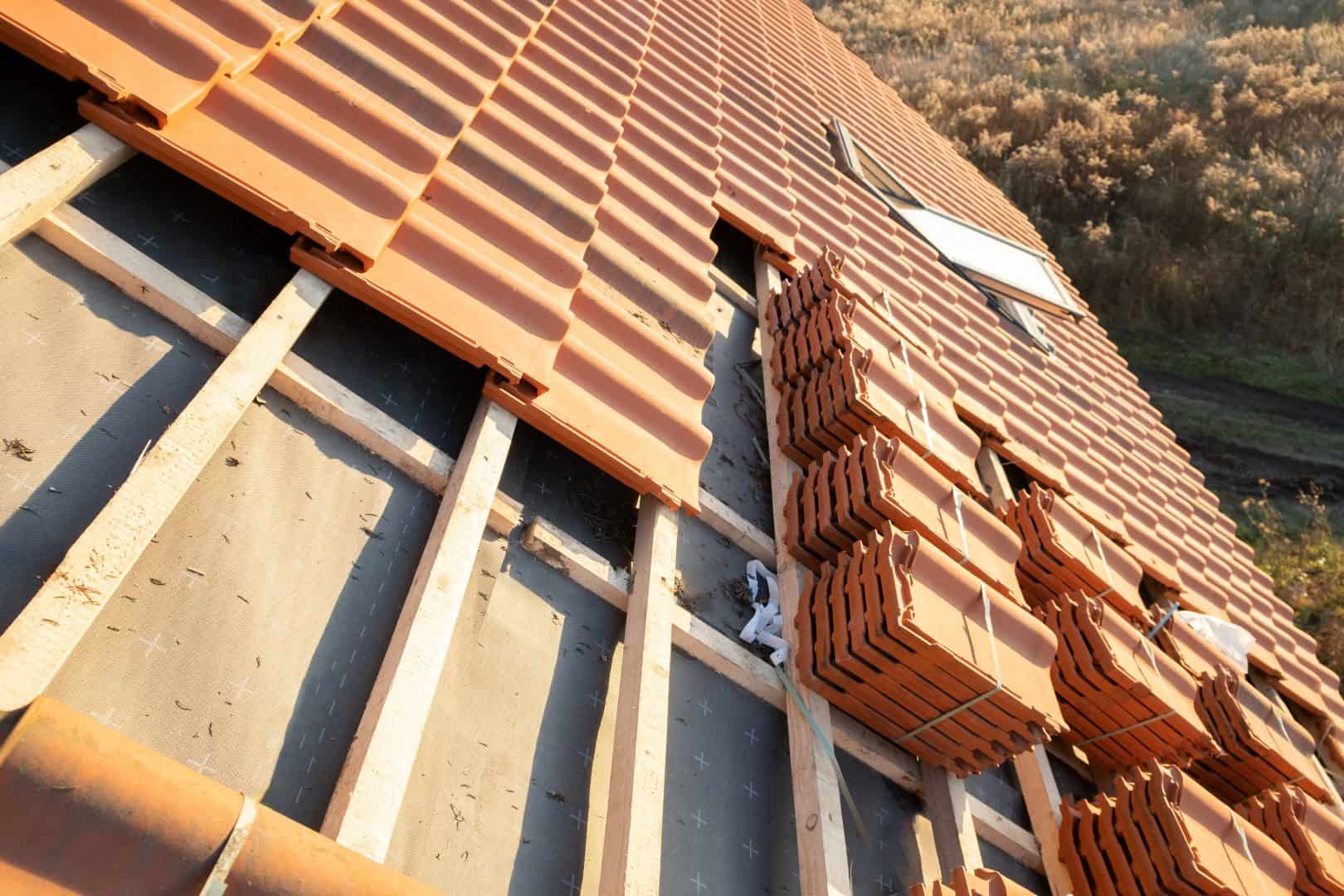What type of roofing material is best for my home?
Fill Out The Form And We'll Get Back To You

With so many roofing materials available, choosing the right one for your home can be a daunting task. Durability, energy efficiency, and aesthetic appeal are key factors to consider when deciding. Your choice will not only affect the overall look of your property but also the long-term maintenance costs and protection against the elements. In this post, we will explore various options, helping you make an informed choice that suits your needs and budget.
Understanding Roofing Materials
The choice of roofing materials can significantly impact your home’s aesthetic appeal, energy efficiency, and overall durability. By understanding the various options available, you can make an informed decision that aligns with your specific requirements and budget. Roofing materials vary based on their composition, longevity, and maintenance needs, and each type comes with its unique set of advantages and disadvantages that you should consider before making a final choice.
Overview of Common Roofing Options
One of the most popular roofing materials is asphalt shingles, which are known for their affordability and ease of installation. They come in a variety of colours and styles, making them a versatile choice for many homeowners. Metal roofing is another option, offering exceptional longevity and energy efficiency. It can reflect solar heat, which helps in reducing energy bills, while also being resistant to harsh weather conditions.
You may also consider clay tiles or slate roofing, both of which are celebrated for their durability and aesthetic appeal. Clay tiles provide a rugged, Mediterranean look, while slate offers a more sophisticated and elegant finish. Each of these options comes with its own set of installation and maintenance requirements, so it’s important to weigh your lifestyle needs against the characteristics of each material.
Factors to Consider in Roofing Selection
For selecting the right roofing material, several critical factors should be on your checklist. First and foremost is the climate in your area; this can greatly influence the durability and functionality of your roof. Additionally, you should consider the cost of materials and installation, as well as the maintenance requirements over time. It’s crucial to select a material that suits not only your budget but also your long-term investment goals as a homeowner.
- Climate resilience
- Cost-effectiveness
- Longevity
- Maintenance needs
This comprehensive approach will help ensure that you choose a roofing option that meets your needs and protects your investment.
For instance, if you reside in an area prone to harsh weather conditions, you might prioritise materials like metal roofing or asphalt shingles, which are known for their resilience. Alternatively, if aesthetic appeal is paramount for you, then investing in slate or clay tiles could be the better option even if they come at a higher price tag. Local building codes should also be taken into account, as some materials may not be permitted for use in specific areas. Furthermore, the style of your home can dictate which materials will harmonise best with the overall look.
- Local building codes
- Home aesthetics
- Environmental impact
- Insurance considerations
This holistic examination of options will guide you toward making the best choice for your roofing project.
Asphalt Shingles
Little do many homeowners realise, asphalt shingles are one of the most popular roofing materials in North America and are increasingly favoured in the UK as well. Known for their versatility, they come in a variety of colours and styles, making them suitable for diverse architectural designs. With a lifespan of approximately 20 to 30 years, asphalt shingles provide a reliable option for roofing needs, combining functional protection with aesthetic appeal.
Benefits and Drawbacks
One of the primary benefits of asphalt shingles is their affordability compared to other roofing materials. They are relatively easy to install, which can significantly reduce the labour costs associated with roofing your home. Additionally, asphalt shingles are available in various styles and colours, allowing you to customise your home’s appearance to suit your preferences. However, it’s necessary to consider the drawbacks; for instance, they may not perform as well in extreme weather conditions such as heavy snowfall or intense heat.
Cost and Longevity
Longevity is a crucial factor to keep in mind when selecting roofing materials, and asphalt shingles can adequately meet your needs in this regard. While they may not last as long as some more premium roofing options, such as slate or metal, asphalt shingles strike a practical balance between initial investment and lifespan. Given their anticipated lifespan of around 20 to 30 years, it’s necessary to assess how this fits within your long-term home investment plans.
Cost is another vital aspect to consider when opting for asphalt shingles. Generally, they are one of the most budget-friendly roofing options available, making them an excellent choice for homeowners looking for an economical solution. Although the initial expense is lower than many alternatives, you should also factor in potential maintenance costs over the years. Proper installation and periodic maintenance can enhance their longevity, ensuring that you get the most value out of your roofing investment.
Metal Roofing
It is imperative to consider the advantages of metal roofing when determining the best materials for your home. Known for its remarkable durability and longevity, metal roofing can withstand the elements better than many traditional materials. Furthermore, it requires minimal maintenance, which can translate into significant cost savings over time. If you’re interested in exploring the various options available for roofing materials, you can refer to the 4 Best Types Of Roofing Materials (2024 Guide). This resource provides insight into selecting the best fit for your property.
Types of Metal Roofing
Any homeowner should evaluate the different types of metal roofing available on the market. These include:
| Steel Roofing | Highly durable and economically priced. |
| Aluminium Roofing | Resistant to corrosion, ideal for coastal areas. |
| Coated Metal Roofing | Provides additional protection and aesthetic appeal. |
| Copper Roofing | Known for its lifespan and attractive patina. |
| Metal Tiles | Imitates traditional tile roofing while offering metal benefits. |
Assume that you aim to achieve a roofing solution that balances form and function; carefully evaluate each option to find the best match for your needs.
Energy Efficiency and Sustainability
With growing concerns about energy consumption and environmental sustainability, metal roofing has become an increasingly popular choice for homeowners. Its reflective properties can help reduce energy costs associated with cooling your home, providing significant savings over time. Additionally, many metal roofing materials are made from recycled materials and are fully recyclable at the end of their lifespan, promoting sustainability and reducing landfill waste.
A significant advantage of metal roofing lies in its energy efficiency. The reflective surface assists in keeping your home cooler in hot weather, which can reduce reliance on air conditioning systems and ultimately lower your utility bills. Moreover, these roofs can also contribute to the overall environmental impact by utilising recycled content and supporting responsible sourcing methods, making them a sound investment for future generations. Selecting energy-efficient materials not only enhances your home’s comfort but also aligns with a more sustainable lifestyle.
Tile and Slate Roofing
Unlike other roofing materials, tile and slate roofing offers a unique blend of aesthetic charm and functional performance. With their natural origins, these materials are known for their beauty and can significantly enhance the visual appeal of your home. Tiles come in a variety of colours and styles, from traditional clay to contemporary concrete, allowing you to choose a look that aligns perfectly with your architectural preferences. Similarly, slate roofing provides a classic, elegant finish that can elevate the character of any property, making it a popular choice among homeowners seeking both style and longevity.
Aesthetic Appeal
An necessary aspect of tile and slate roofing is the aesthetic appeal that both of these materials bring to your home. The unique textures and colours available in tile and slate roofing create a striking visual impact that can complement various architectural styles—from rustic cottages to modern abodes. Additionally, the versatility offered by these materials means you can achieve a tailored look that meets your personal taste and enhances your property’s overall curb appeal.
Durability and Maintenance
To ensure your roofing does not just look good but also stands the test of time, tile and slate are among the most durable materials you can choose. Both options are resistant to harsh weather conditions and are less likely to suffer from rot or decay compared to wooden alternatives. This quality not only translates to a longer lifespan—often exceeding 50 years—but also results in lower maintenance requirements, saving you both time and money over the years. However, you should be aware that proper installation is crucial to avoid potential cracking or chipping, particularly with slate, which can be more fragile than tile. Regular inspections can help catch any minor issues before they escalate, ensuring that your roofing remains in top condition.
Plus, choosing tile and slate roofing means you’ll benefit from excellent fire resistance, further enhancing the safety of your home. Maintaining these roofs is relatively straightforward, requiring occasional cleaning to remove debris and ensure drainage systems remain clear. By investing in high-quality tiles or slates, you’ll enjoy the peace of mind that comes with a resilient, long-lasting roofing solution that not only protects your home but also adds to its aesthetic value.
Wood Shakes and Shingles
Many homeowners are drawn to wood shakes and shingles due to their natural aesthetic and traditional appeal. These roofing options offer a unique texture and warmth that can enhance the overall look of your home. In addition to their visual benefits, wood shakes and shingles provide excellent insulation properties, helping to keep your home cooler in summer and warmer in winter. This can lead to improved energy efficiency, potentially reducing your heating and cooling costs over time.
Natural Look and Insulation
Shakes are thicker and have a more rustic appearance compared to shingles, which are typically milled from flat wood. This difference can create distinctive visual contrasts, allowing you to choose a style that best suits your taste and the architecture of your home. From a practical standpoint, the natural wood composition also allows for good air circulation, which aids in regulating temperature and moisture levels in your roof structure.
Risks and Maintenance Needs
Natural wood, while beautiful, comes with certain risks and heightened maintenance needs. Wood shingles and shakes are susceptible to rot, mould, and insect infestations, especially in damp or humid climates. Regular inspection and treatment are crucial to prolong their lifespan and prevent structural issues. You’ll need to plan for periodic cleaning and re-sealing, which can add to the overall cost of maintaining your roof.
A commitment to proper maintenance is crucial when choosing wood shakes and shingles for your roof. Due to their vulnerability to the elements, you’ll need to be proactive in monitoring for any signs of damage or decay. Additionally, applying protective coatings can mitigate weather-related deterioration, but these solutions require ongoing attention and investment to ensure your roof remains in excellent condition over the years.
Choosing the Right Material for Your Climate
All roofing materials have their strengths and weaknesses, but the best choice for your home largely depends on the climate in which you live. You’ll want to consider factors such as temperature extremes, rainfall, and exposure to sunlight. For warmer climates, materials like tile or metal can reflect sunlight and keep your home cooler, while in colder regions, asphalt shingles or slate can provide better insulation. To explore the 8 Best Roofing Materials for various conditions, ensure you weigh the pros and cons associated with each option.
Weather Considerations
The effectiveness of your roofing material is significantly influenced by your local weather patterns. For areas that experience heavy wind and storms, you might prioritise wind-resistant materials, such as metal roofing, which can withstand nature’s fury. Likewise, if you’re in a region prone to heavy snowfall, selecting materials that are strong and can handle the weight, such as slate or cedar shake, is crucial.
Regional Popularity of Materials
One aspect to consider is how popular certain materials are in your region, as local building codes and the prevalence of specific roofing styles can affect your options. Certain materials may be favoured in one area for their ability to handle local weather conditions. For instance, clay tiles are popular in warmer climates due to their ability to reflect heat, while asphalt shingles might be more common in temperate regions because of their affordability and versatility.
To ensure your roofing choice aligns with regional trends, consult local contractors or your community’s building authority. This will provide you with insights into durability and performance based on specific environmental factors that might impact your roof over time. Your decision should not only focus on aesthetics or cost, but also how well your selected material interacts with your local climate to ensure the utmost safety and durability for your home.
To wrap up
As a reminder, selecting the best roofing material for your home hinges on various factors including climate, architectural style, and budget. You should consider materials that not only offer durability and longevity but also complement the aesthetic of your property. For instance, if you live in a region that experiences heavy rainfall, you might want to prioritise materials like slate or tile that can effectively withstand the elements. Conversely, if you’re seeking a more budget-friendly option, asphalt shingles may be a suitable choice while still providing adequate protection.
Ultimately, it is crucial to balance practicality with personal preference. Take the time to weigh up the benefits of different materials and assess your specific needs. Consulting a roofing professional can also provide you with insights tailored to your unique situation, ensuring you make an informed decision that protects your home and enhances its value. Keep in mind, your roof is not just a structural element of your home; it is an investment in your comfort and safety.
FAQ
Q: What type of roofing material is best for a residential home?
A: The best roofing material for your home largely depends on your local climate, budget, and personal preference. For example, asphalt shingles are popular due to their affordability and ease of installation, while metal roofing is more durable and energy-efficient, making it suitable for varying weather conditions. If you live in an area prone to wildfires, materials like slate or clay tiles might be ideal as they are fire-resistant. It’s necessary to weigh the pros and cons of each material and consult with a roofing professional to find the best option tailored to your home.
Q: How do I choose roofing materials based on my local climate?
A: When dicking out roofing materials for your home, consider the climate in your area. In regions with heavy rainfall or snow, materials like asphalt shingles or metal roofing can efficiently shed water and resist leaks. In hot climates, reflective materials such as metal or lighter-coloured shingles can help reduce heat absorption, improving energy efficiency. Additionally, in areas prone to high winds, roofing materials with a higher wind resistance rating will be beneficial. Evaluating the specific weather patterns and their impact on your roof will guide you in making a more informed decision.
Q: What is the lifespan of different roofing materials?
A: The lifespan of roofing materials can vary significantly, so it’s important to choose one that meets your long-term needs. Asphalt shingles typically last around 15-30 years, depending on the quality and installation. Metal roofs can last 40-70 years, while slate roofs can exceed 100 years when properly maintained. Clay tiles can also last 50 years or more. When considering longevity, take into account both the initial cost and potential long-term savings on repairs and replacements, which will help you assess the value of your investment in roofing materials.
New Roof
The guys made a fantastic job of re-roofing our house. They were quick, courteous and excellent value for money.
Chimney Repair
We employed Wrights Roofs to repair our very old chimney – tht had seen better days. They carefully repaired, repointed and re-leaded our chimney which should last me out.
Solar Panel Installs
We had panels that needed putting onto our pitched roof. The guys from Wrights did a great job.
Roofs, Flat Roofs Chimneys and Solar Panels
If you need roof work on your home, please complete the form or call us today.

